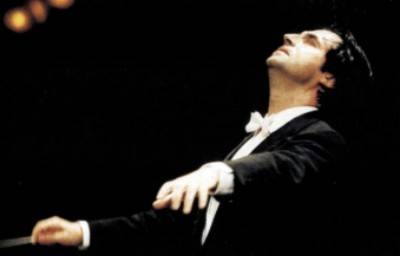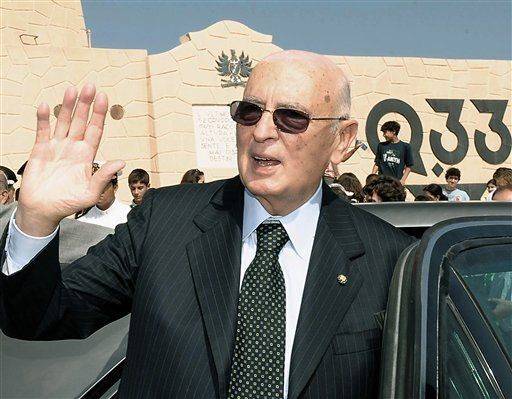L’Aquila: Riccardo Muti and Music for Hope and Brotherhood
L’Aquila – This was Italy at its best. Wild applause, tears of joy and pain, and a stirring rendition of the Italian national anthem concluded an open-air concert Sunday evening of intentionally patriotic and purely Italian music by Bellini and Verdi. The deeply moving concert was held against a backdrop of mountain peaks at sunset Sunday evening in the heart of the zone devastated by the earthquake April 6.
Riccardo Muti, between engagements in Salzburg and Chicago, directed an all-Abruzzese scratch orchestra and chorus of three hundred, including students from the famed conservatory here, itself severely damaged.
The performance took place on a temporary stage mounted within the Finance Guards’ barracks compound in which the leaders of the G8, including President Obama, recently met. The large open space where the stage was mounted had been specifically utilized for the funerals of the 300 earthquake victims. Ending the concert, Muti said that while conducting the music he felt that he and all the musicians were also communing in an ideal sense with the spirits of those who had died.
In a meeting beforehand with a delegation of the foreign press, Muti had stressed his own Neapolitan and Pugliese roots, and spoke movingly of the way in which can music help to bring people together and foster reconstruction of a community that has suffered so deeply.
For an observer, it was an incredible experience, with a strong political edge. The Italian national anthem by Mameli is being rejected by the Northern League, and Muti—who opened the concert with the anthem—then performed it a second time as an encore. At that point he replaced his formal black jacket with one borrowed from a firefighter and descended into the audience of nine thousand to salute Italian President Giorgio Napolitano, who was greeted with an extraordinary roar of applause.
Also on hand, representing the government, was one of Premier Silvio Berlusconi’s top
advisors, Gianni Letta.
In the days before this extraordinary event Civilian Protection personnel had called upon quake victims, tent by tent, passing out invitations to all those interested. Nine thousand attended. Because the concert was for them, the first thirty or so rows were for those still living in tents; the VIP’s were placed well behind. Many in the audience were dressed in finery, but a great many of the 100,000 affected by the quake came wearing jeans and gym jackets, or whatever was available in their temporary housing.
The concert concluded a summer arts festival called Campi Sonori that is part of the local citizens’ commitment toward cultural as well as the more customary forms of reconstruction.
Guido Bertolaso, the engineer who heads the reconstruction efforts for the government, told journalists that priorities for reconstruction is going to young families, and particularly schools and housing. Although 60% of the area’s schools were damaged or destroyed, new schools are being built by construction companies working around the clock, and schools will start on time, he announced with legitimate pride.
Journalists also toured some of the new housing, almost ready. “We made one key decision,” said Bertolaso. “No containers. I just returned from one quake zone, Foligno, where after years people are still living in containers. We are building regular homes as well as using prefab wooden structures—our enemy is the snow, but we shall be ready.”
He pointed out that the fairly recent previous earthquakes, such as in the Irpinia in late 1980 and in the Belice Valley in the Sixties, took place in areas with a relatively low number of inhabitants and small, scattered towns. “The only comparison with this one is the 1905 Messina earthquake,” he said.
L’Aquila is one of Italy’s top 20 “cities of art,” with an important cultural history, fine historic buildings, a university and music conservatory. “We decided to maintain the area’s social viability of the community,” he said. The basis for reconstruction planning is to maintain its unique culture by creating the possibility for young people to remain in the area—hence the emphasis on cultural reconstruction. Even the conservatory will reopen in late November in temporary quarters.
Physical reconstruction of the city center will proceed at a slower pace. Visitors to town’s famed historic center see spiderweb cracks across the facades of buildings, tie bars and their equivalent of tie wrappings that keep the buildings from collapsing. The entire old city center is still under guard, off limits to all but a few. But at the civic theater a brand new elegant auditorium was just inaugurated.






































i-Italy
Facebook
Google+
This work may not be reproduced, in whole or in part, without prior written permission.
Questo lavoro non può essere riprodotto, in tutto o in parte, senza permesso scritto.